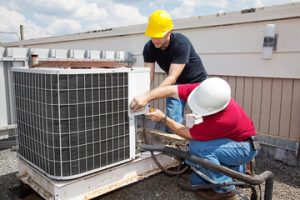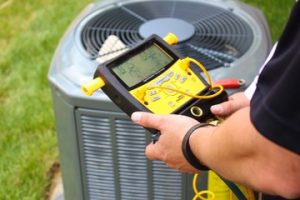Air conditioning systems are essential for maintaining comfort in homes, offices, and commercial spaces. They regulate temperature, improve air quality, and provide a productive environment for occupants. However, even the most reliable air conditioners require professional attention to operate efficiently and maintain long-term performance. Trusted AC Repair Round Rock TX specialists play a critical role in ensuring systems run smoothly, reducing energy consumption, and extending equipment lifespan.
The Role of Trusted Air Conditioning Repair Specialists

Air conditioning systems are complex, consisting of mechanical, electrical, and refrigerant components. Key elements include compressors, evaporator and condenser coils, fans, ductwork, thermostats, and air filters. When any of these components malfunctions, the system can experience reduced cooling capacity, increased energy usage, or complete failure.
Trusted AC repair specialists provide expertise in diagnosing, repairing, and maintaining these systems. They ensure that each component functions correctly and that the overall system delivers consistent performance. By relying on experienced professionals, property owners can prevent minor issues from becoming major problems that result in costly repairs or system replacements.
For homeowners, professional repair guarantees comfort and reliable cooling. For businesses, it maintains productivity, protects equipment, and provides a pleasant environment for employees and customers.
Common Air Conditioning Problems
Understanding common air conditioning issues can help property owners recognize when to call a specialist. Some of the most frequent problems include:
- Insufficient Cooling
- An AC system may fail to cool effectively due to low refrigerant, blocked airflow, dirty coils, or a malfunctioning compressor. Technicians accurately diagnose the root cause and restore optimal cooling.
- Refrigerant Leaks
- Refrigerant is crucial for heat transfer in an air conditioner. Leaks reduce efficiency, strain the compressor, and increase energy consumption. Specialists locate and repair leaks, recharge refrigerant, and test system performance.
- Frozen Evaporator Coils
- Ice buildup on coils can result from airflow restrictions, low refrigerant, or dirt accumulation. Technicians clean coils, correct airflow issues, and restore refrigerant levels to resolve freezing problems.
- Electrical Malfunctions
- Faulty wiring, blown fuses, or damaged capacitors can disrupt AC operation. Experienced repair specialists safely inspect and repair electrical components to ensure reliable performance.
- Strange Noises
- Buzzing, rattling, or grinding sounds may indicate mechanical or electrical problems. Professionals diagnose and repair the source, restoring quiet and efficient operation.
- Water Leaks
- Clogged drain lines or damaged pans can cause condensation leaks. Specialists clear blockages, repair components, and prevent water-related damage to the property.
- Thermostat Issues
- Malfunctioning thermostats can lead to uneven temperatures, frequent cycling, or system shutdown. Technicians recalibrate, repair, or replace thermostats to ensure accurate temperature control.
Prompt repair of these issues restores cooling performance, improves energy efficiency, and prevents further damage to the system.
Benefits of Professional AC Repair
Engaging trusted air conditioning repair specialists offers numerous advantages:
- Restored Comfort: Quick and effective repair ensures consistent cooling in homes and commercial spaces.
- Energy Efficiency: Properly functioning systems consume less energy, reducing utility bills and environmental impact.
- Extended Equipment Life: Timely repairs minimize stress on components, prolonging the system’s lifespan.
- Improved Air Quality: Clean filters, optimal airflow, and functioning components enhance indoor air quality.
- Cost Savings: Preventing major breakdowns reduces the need for expensive replacements or emergency repairs.
- Reliability: Dependable repair ensures uninterrupted operation during hot weather, maintaining comfort and productivity.
Professional AC repair services provide peace of mind by ensuring comfort, efficiency, and reliability.
Preventive AC Maintenance
Regular preventive maintenance is essential to reduce repair frequency, improve efficiency, and extend system life. Maintenance tasks performed by specialists typically include:
- Filter Cleaning or Replacement: Maintaining clean filters ensures proper airflow, reduces energy consumption, and improves air quality.
- Coil Cleaning: Dirt on evaporator and condenser coils reduces cooling efficiency. Routine cleaning enhances heat transfer and performance.
- Refrigerant Level Checks: Proper refrigerant levels prevent compressor strain and support efficient operation.
- Electrical Inspections: Checking wiring, fuses, and capacitors prevents electrical failures and ensures safe operation.
- Drain Line Cleaning: Clearing blocked condensation lines prevents leaks and water damage.
- System Performance Testing: Inspecting airflow, temperature consistency, and overall efficiency helps detect potential issues early.
Many AC specialists offer seasonal maintenance plans that schedule inspections before peak cooling periods, ensuring systems are prepared for heavy use. Preventive maintenance improves energy efficiency, reduces repair costs, and maintains year-round comfort.
Residential AC Services
Homeowners rely on air conditioning systems to maintain comfortable indoor temperatures, improve air quality, and lower energy costs. Professional residential services include:
- Installation: Proper system sizing and installation are crucial for long-term performance. Technicians assess home layout, insulation, and cooling needs to recommend the right system.
- Repair: Timely repairs address mechanical, electrical, and refrigerant issues, restoring optimal performance.
- Maintenance: Routine inspections, filter changes, coil cleaning, and system checks keep the system functioning efficiently.
- Upgrades: Energy-efficient components, programmable thermostats, and advanced filtration systems enhance comfort while reducing energy bills.
Residential AC services provided by trusted specialists ensure reliable performance, comfort, and energy efficiency.
Commercial AC Services
Businesses require reliable air conditioning to maintain productivity, protect equipment, and provide a comfortable environment for employees and customers. Professional commercial AC services include:
- System Design and Installation: Large or complex spaces often require customized solutions, including high-capacity units, zoning, and optimized ductwork.
- Repair and Troubleshooting: Rapid identification and resolution of mechanical, electrical, or refrigerant issues prevent downtime and disruption.
- Preventive Maintenance: Scheduled inspections and servicing prevent unexpected failures, reduce energy costs, and extend equipment life.
- Energy Efficiency Upgrades: Smart controls, high-efficiency components, and improved airflow improve performance and reduce operational costs.
Reliable commercial AC services ensure businesses can maintain comfort, safety, and efficiency throughout the year.
Energy Efficiency and Cost Savings
Maintaining a properly functioning air conditioning system directly improves energy efficiency. Professional repair and maintenance services enhance efficiency by:
- Repairing Refrigerant Leaks: Maintaining correct refrigerant levels optimizes cooling and reduces energy consumption.
- Restoring Airflow: Cleaning filters and ducts ensures proper airflow, preventing the system from overworking.
- Upgrading Components: Replacing worn parts with energy-efficient motors, fans, or compressors reduces electricity usage.
- Optimizing Thermostats: Programmable or smart thermostats manage system operation based on occupancy and schedules, saving energy.
Energy-efficient AC systems provide consistent comfort while lowering utility bills and environmental impact.
Improving Indoor Air Quality
Air conditioning systems play a vital role in maintaining healthy indoor air. Expert repair and maintenance enhance air quality by:
- Advanced Filtration: High-quality filters capture dust, allergens, and fine particles.
- Humidity Control: Proper moisture management prevents mold growth and improves occupant comfort.
- Air Purification: HEPA filters, UV lights, and ionizers reduce airborne pollutants, creating healthier indoor environments.
Improved air quality contributes to occupant health, comfort, and system efficiency.
Signs You Need Professional AC Services
Property owners should watch for indicators that expert repair or maintenance is required:
- Uneven or insufficient cooling throughout the property
- Unusual noises or vibrations
- Water leaks or excessive condensation
- Ice buildup on coils
- Frequent system cycling or short cycling
- Rising energy bills despite normal use
- Poor indoor air quality or unusual odors
Early intervention by trusted AC specialists prevents minor issues from becoming major problems, ensuring consistent performance and comfort.
Choosing a Trusted AC Repair Specialist
Selecting the right service provider is essential for long-lasting system performance. Key considerations include:
- Experience and Expertise: Technicians should be knowledgeable about various AC systems and components.
- Comprehensive Services: Providers should offer repair, maintenance, and installation options.
- Prompt Response: Quick service minimizes discomfort and downtime during extreme weather.
- High-Quality Parts: Using durable, reliable replacement components ensures long-term performance.
- Maintenance Programs: Scheduled maintenance plans help prevent future problems and maintain energy efficiency.
A trusted AC repair specialist ensures reliable cooling, improved indoor air quality, and long-lasting system performance.
Trusted air conditioning repair specialists are essential for maintaining comfort, energy efficiency, and indoor air quality. Professional installation, timely repairs, and routine maintenance ensure AC systems operate efficiently, extend equipment lifespan, and prevent costly breakdowns.
Preventive maintenance reduces emergency repairs, improves energy efficiency, and keeps cooling systems performing reliably year-round. Addressing common issues such as refrigerant leaks, frozen coils, clogged filters, or electrical malfunctions ensures maximum comfort and long-lasting performance.
Whether for residential or commercial properties, investing in the expertise of trusted AC repair specialists guarantees consistent cooling, lower energy costs, and a healthier indoor environment. Professional air conditioning care is an essential investment in comfort, efficiency, and system longevity.

